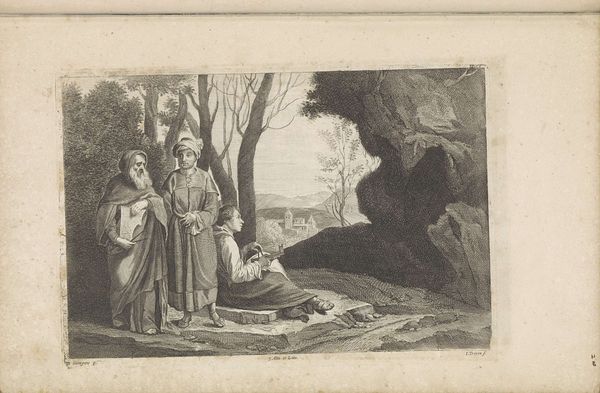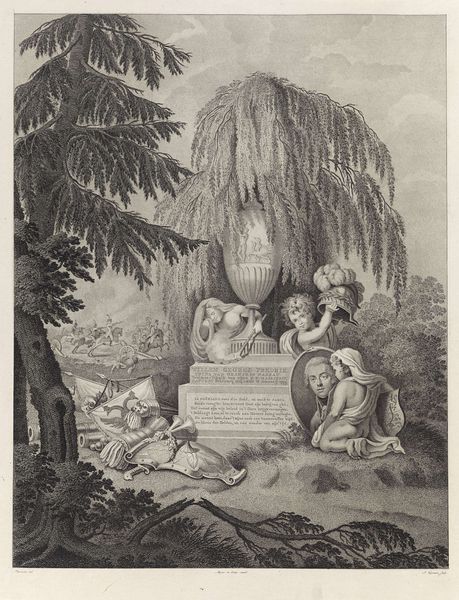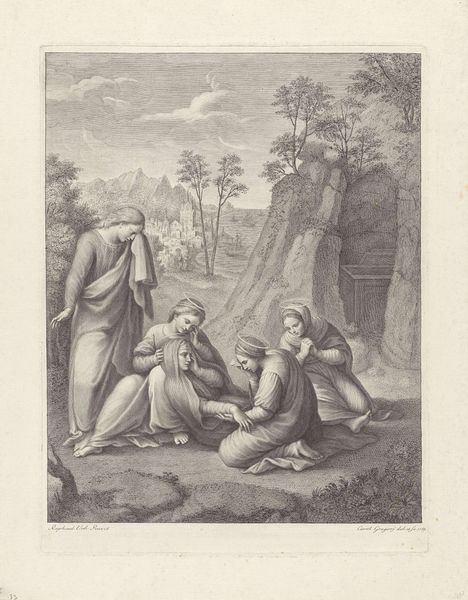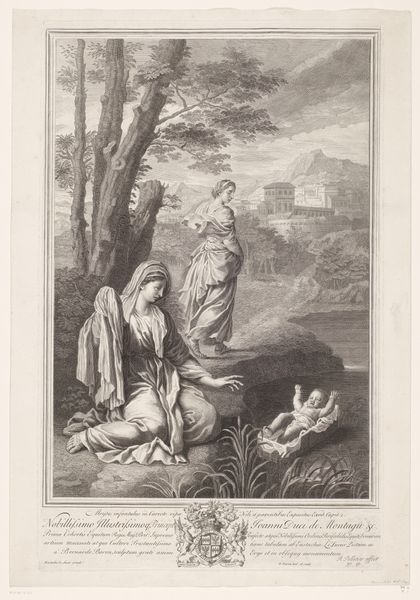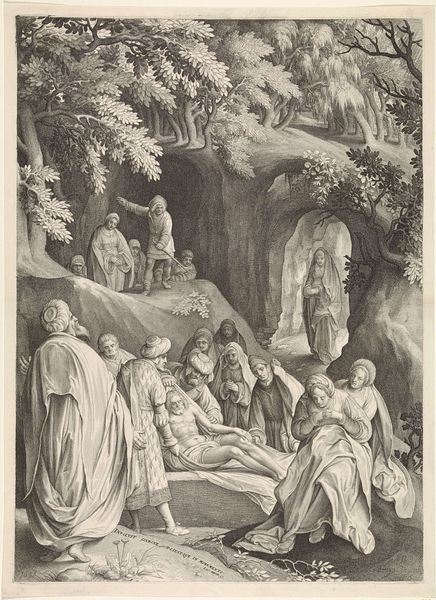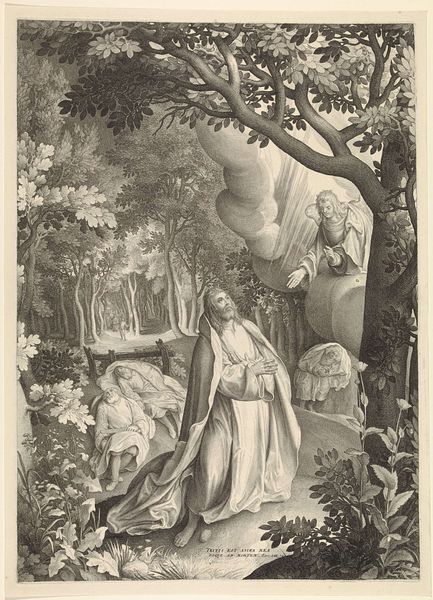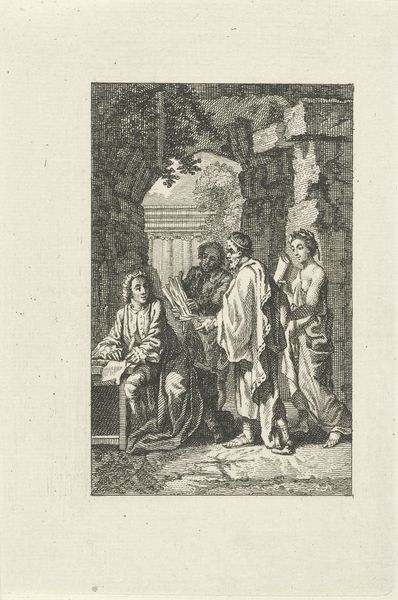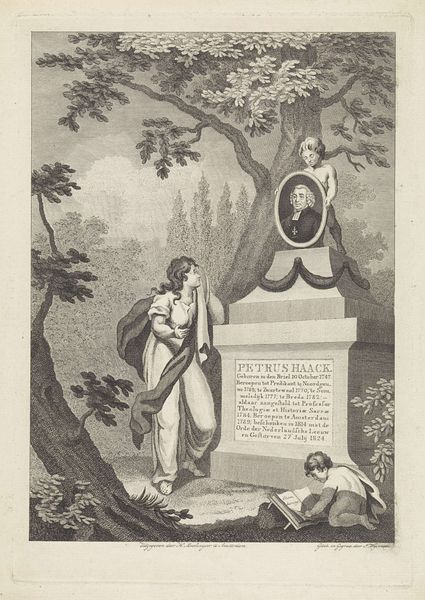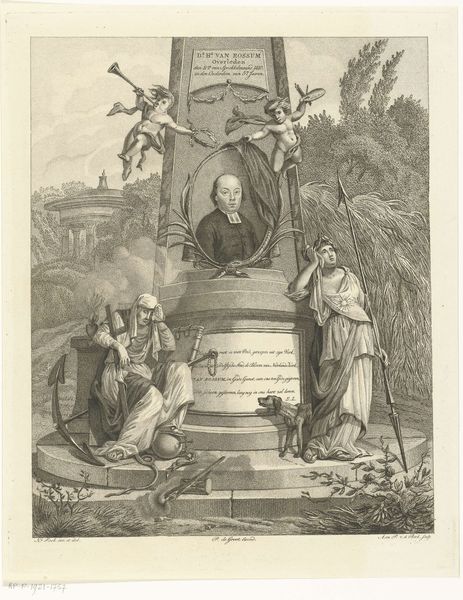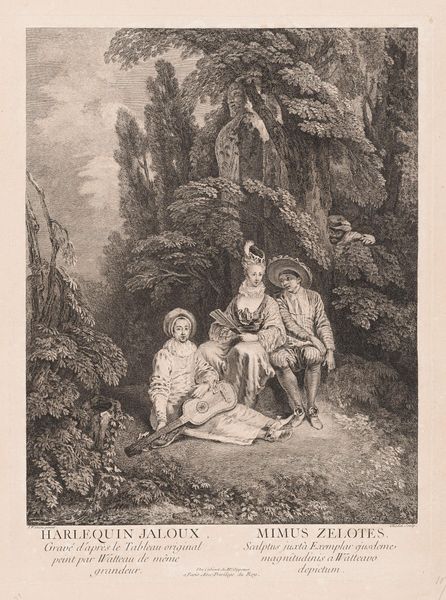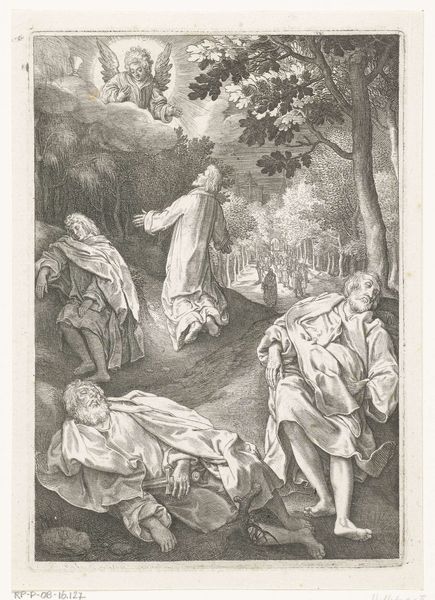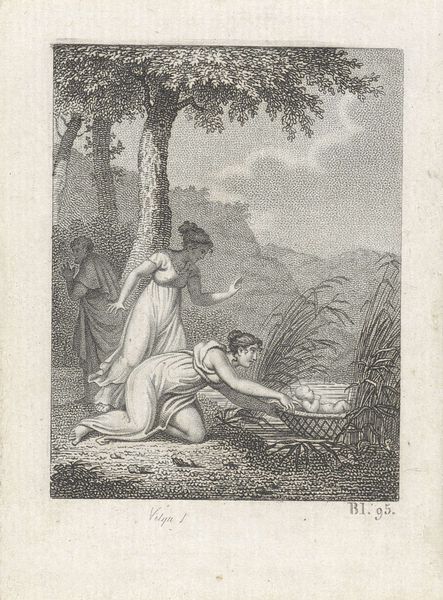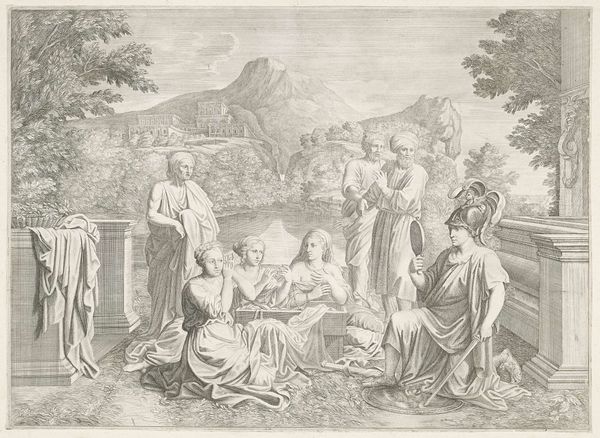
engraving
#
portrait
#
neoclacissism
#
allegory
#
old engraving style
#
landscape
#
history-painting
#
engraving
Dimensions: height 571 mm, width 425 mm
Copyright: Rijks Museum: Open Domain
Editor: Here we have "Allegorical Memorial for William V, Prince of Orange-Nassau," an engraving by Jacobus Wijsman, made between 1799 and 1806. It definitely has a neoclassical aesthetic. I'm struck by the stillness, almost a solemn theatricality in the composition. What formal elements stand out to you? Curator: Observe how the composition orchestrates a dialogue between stillness and animation. The static, idealized figures surrounding the memorial contrast vividly with the implied motion of the writing cherub and the posture of the pensive figures in the lower left. This tension guides our eye through a landscape both real and symbolic. Notice the use of light and shadow to accentuate form and volume, creating a heightened sense of depth within the print medium. The stark contrast is quite evocative, wouldn't you agree? Editor: Absolutely. The chiaroscuro really emphasizes the emotional weight of the scene, but does the overall design contribute to how the story is told? Curator: Precisely. Consider how Wijsman employs neoclassical order to frame a memorial, a testament to Prince William. This structural rigor serves not just as a backdrop, but also as a grounding element, stabilizing the narrative through visual means. In considering line quality, are you seeing varied emotional or thematic significance? Editor: Yes, now that you mention it, there is more line detail in the weeping willow versus the distant landscape. It helps add to the sorrowful mood and feeling of grief present in the foreground, but with hope for a future. Thanks! Curator: The engraving masterfully intertwines form and content, prompting a deep contemplation on memory, legacy, and artistic expression. Thank you for the careful visual analysis; it really elucidated how compositional choices create meaning.
Comments
No comments
Be the first to comment and join the conversation on the ultimate creative platform.
